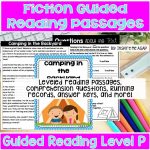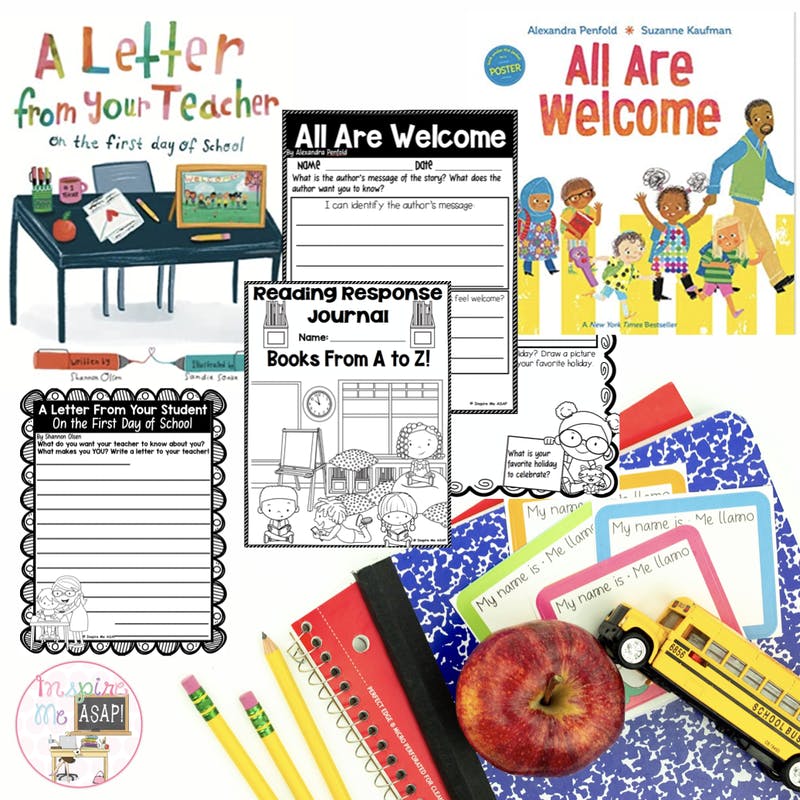$15.00
The experiments, lessons, and activities in this unit will have your students saying “NO!” to processed foods, sugar, and junk food…while saying “YES!” to apples, carrots, exercise. This resource has a huge variety of hands-on, engaging, and interactive nutrition lessons, experiments, and reproducibles that will empower and educate your students to make good choices with food and exercise.
Food Group Activities
1. Reading passage and comprehension questions- Students read the two page reading passage, titled The Food Groups. Using evidence from the text, students answer a mix of true/false, multiple-choice, and short response questions. An answer key is included.
2. Food group posters- There are three different posters for each food group. One poster has clip art images of the foods in that food group and the other poster has real photographs of the foods in that food group. The third poster includes the image of the MyPlate Graphic with each food group highlighted. You can use the food group posters as a reference as you learn about each food group.
3. Food group flip book- There is one page for every food group, and also a 3 different options for a cover page. Students write about the benefits of eating foods from each food group, examples of foods from each food group, and draws their favorite foods from each food group.
Eat a Rainbow Every Day Activities
1. Reading passage and comprehension questions- Students read the two-page reading passage, titled Eat a Rainbow Every Day. Using evidence from the text, students answer a mix of true/false, multiple-choice, and short response questions. An answer key is included.
2. Eat a rainbow posters- There are two different posters to print in color. Both posters have photographs of red, orange, yellow, purple/blue, and green-colored fruits and vegetables.
3. Choosing healthy foods- On this one page (black and white) printable, students identify the foods that are the highest in vitamins, minerals, and nutrients. This worksheet includes food items labeled with names and clip art.
4. Eat a rainbow every day flip book- In this interactive activity, students cut out different colored fruits and vegetables from magazines and grocery store advertisements. Students search for pictures of foods that are red, blue, purple, yellow, orange, and green. A note to send home to families requesting food magazines, along with pictures of the completed project are included.
Healthy and Unhealthy Breakfast Choices
1. Healthy and unhealthy lunches- In this lesson, students dissect their lunch and observe the different food groups represented. Students will write and/or draw the included foods on the graphic organizer.
2. Compare and contrast lunches- In this lesson, students compare the differences between a healthy and unhealthy lunch. There are two options- posters with clip art of food and posters that are photographs of real foods. Students write about what the lunches have in common and what is different about the two lunches on the graphic organizer of a Venn diagram. This activity also includes two printables of the “Choose my Plate” images.
3. Comparing Two Different Breakfasts- In this lesson, students look at pictures of two different breakfasts. The pictures are photographs of real food. Students identify how many different food groups are represented and place the foods in the correct food group. Lastly, students will use the graphic organizer to determine, if, overall the breakfast is healthy. There is a one-page printable with an image of an empty food tray. On this page, students draw their own healthy lunch or breakfast, carefully choosing foods from each food group.
Analyzing Nutrition Labels
In these lessons, students learn the basics about how to read and analyze the nutrition label on packaged foods.
1. Reading a nutrition label- This one-page, color printable points out the different parts of a nutrition label.
2. Reading a nutrition label- On this one-page worksheet, students read the nutrition label and then answer questions about the food.
3. Analyzing a nutrition label for chocolate milk- Students analyze the ingredients and the nutrition facts of a half-pint of chocolate milk. In this two-page worksheet, students answer a variety of short answer questions after analyzing the nutrition label.
4. My nutrition label- Students can use the blank template of the nutrition label to fill in with their own information from food that they brought from home. Students write the ingredients and write what they learned on this one-page reflection.
5. Eggs and Cereal Nutrition Facts- For this activity, students read the different nutrition facts for Honey Nut Cheerios and an egg. Students answer the mix of true/false, short answer, and multiple-choice questions about the two nutrition facts.
Food Pyramid Lessons
In these lessons and activities, students learn about the difference between the old and the new food pyramid (focus on exercise).
Sugar lessons, activities and experiment
1. Reading passage and comprehension questions- Students read the four-page reading passage titled, All About Sugar. The reading passage includes real photographs and informational text features, such as captions. Using evidence from the text, students answer a mix of true/false, multiple-choice, and short response questions. An answer key is included.
2. True and False Interactive Sugar Sort- There are 16 cards that have a sentence about sugar. One at a time, a student reads the card and the class determines if the statement is true or false by holding up “true” or “false.” Students have a discussion about the statement and place in under the card “true” or “false.” After this part of the lesson is complete, students will independently read, cut, and sort the sentences into “true” and “false” statements. Resources include directions, 16 statements about sugar, one blank template to write your own, an answer key, and a “sugar shock” color poster to print.
3. Sugar Sleuths- As a follow-up to the whole group true and false interactive sort, students turn into sugar sleuths and independently (or with a partner) read, cut out, and sort all sentences into their own book. There are 16 sentences for the student to sort under “true” or “false.”
4. High Sugar/Low Sugar Food Sort- There are 36 photographs of real food that students identify as “high sugar” or “low sugar.” Students sort the foods into the correct category. This can be done as a whole group or as a center. Resources include a color informational poster about high sugar foods, 36 real photographs in color of common foods, and “high sugar/low sugar” cards to print.
5: Sugar Experiment- Students use sugar cubes to measure out the amount of sugar in their favorite snack. Students compare the amount of sugar in their food to the other snacks students tested.
Please contact me prior to purchasing if you have any questions.





Get instant LIFETIME access to hundreds of passages for all levels! These reading passages will create a high level of engagement for your readers and are perfect for their reading level.

Creating a classroom community of engaged and independent readers starts from day one of the school year! I created 26 different graphic organizers and a free reading response journal to inspire your readers!
Each graphic organizer correlates to a story that promotes inclusion, kindness, and empathy! Download today for free!